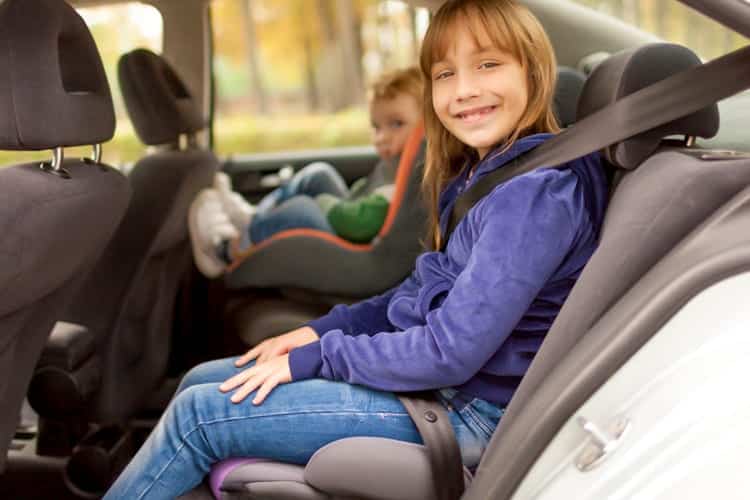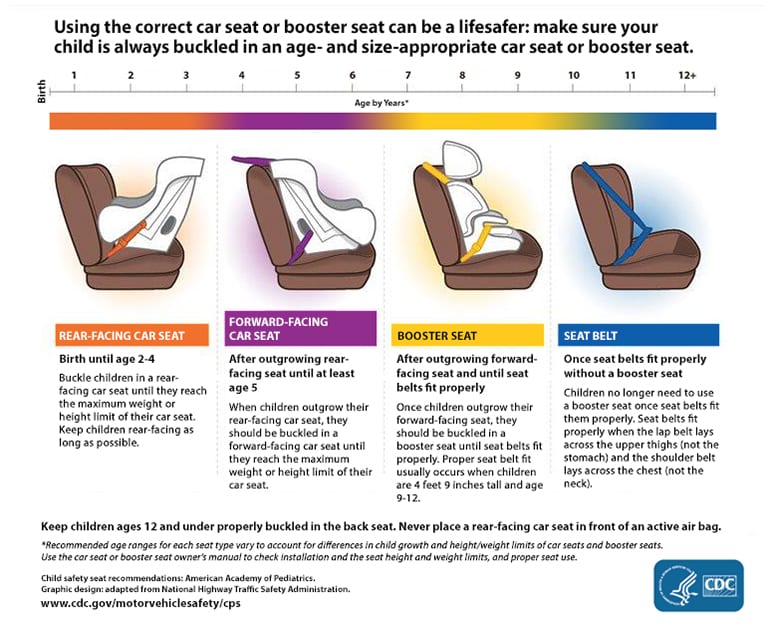
The most dangerous thing many of us do on a given day is also one of the most common things: we get into our cars and take to the road. The National Safety Council estimated that in 2017, more than 40,000 Americans died in automobile accidents. And the risk to children is especially high – auto accidents are the number one cause of death for children over the age of four. One recent study found that 43 percent of children who died in a car crash were either not buckled in properly or were not wearing a seat belt.
All of us hope to never experience the trauma of a car accident, but knowing which car safety seat or booster seat to use for your child at each stage of their life can make a big difference if the unimaginable ever does happen to you. And the good news is that the use of the proper car seat can reduce the risk of death or serious injury to your child in a car crash or truck accident by more than 70%.
To help parents and caregivers know which vehicle restraint is the safest for their child at every age and size, the American Academy of Pediatrics has just come out with new and revised child safety seat guidelines. They including the recommendations that:
- Children should ride in a rear-facing car safety seat as long as possible, up to the limits of their car safety seat. This will include virtually all children under 2 years of age and most children up to age 4.
- Once they have been turned around, children should remain in a forward-facing car safety seat up to that seat’s weight and length limits. Most seats can accommodate children up to 60 pounds or more.
- When they exceed these limits, child passengers should ride in a belt-positioning booster seat until they can use a seat belt that fits correctly.
- Once they exceed the booster limits and are large enough to use the vehicle seat belt alone, they should always use a lap and shoulder belt.
- All children younger than 13 years should be restrained in the rear seats of vehicles for optimal protection.
Parents should keep in mind that instead of rushing their child out of a certain stage of car safety seat–say from rear-facing to front-facing car seat–the safest thing to do is to stay in a particular safety seat for as long as your child fits within the seat’s height and weight guidelines. Each step up provides a little bit less protection for the growing child, so don’t rush them on to the the next-older seat before you have to.
